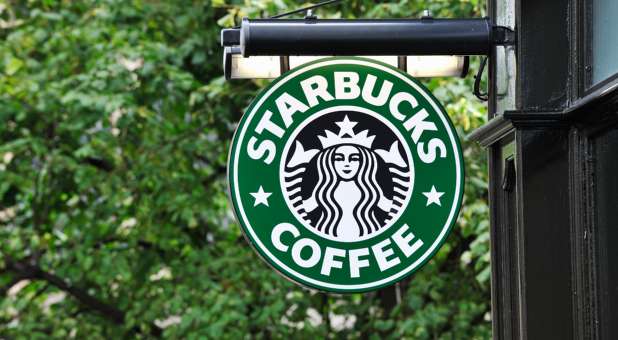The Church, Like Starbucks, Needs More Racial Sensitivity
Starbucks closed 8,000 of its stores this week so its baristas could undergo four hours of racial sensitivity training. The company took the drastic action to counteract negative publicity it got last month when two black men were handcuffed and arrested simply because they sat in a Starbucks store in Philadelphia without ordering any coffee.
The ugly incident on April 12 triggered angry reactions. Some customers began boycotting Starbucks when they learned that a white employee called Philadelphia police after telling the two men they couldn’t use the restroom without buying anything. CEO Kevin Johnson then went on an “apology tour” and announced he would give his 175,000 employees a racial sensitivity seminar, but some people viewed the training as a publicity stunt designed to protect Starbucks—which makes $14 billion a year in profit—from a customer backlash.
I’ll admit I don’t have high hopes that a four-hour seminar will end racism in America. Yet when I learned about Starbucks’ plan, my first thought was: Maybe we need to close our churches for a day and do the same thing. Because racism is alive and well in American congregations—and we need to face it.
If I were going to offer racial sensitivity training to a church, I would include the following steps:
- Teach more about the Holy Spirit. Whenever the Holy Spirit shows up, racial barriers fall. The first Pentecost was a multicultural miracle; no one can be called a Pentecostal if he doesn’t embrace racial and ethnic diversity. Many churches limit the work of the Holy Spirit’s gifts and manifestations. Is it any surprise that churches that quench the Spirit are racially segregated? If you want racial diversity in your church, encourage people to be filled with the Spirit. He will tear down the walls that divide us!
- Address racism from the pulpit. Jesus boldly confronted racism, especially the Pharisees’ snobbish attitude toward Samaritans. Jewish leaders hated Jesus because He showed compassion to everyone, regardless of ethnicity. And the apostle Paul’s decision to take the gospel to Gentiles offended Jewish people who didn’t believe God cared about anyone but them. The gospel is not the gospel if it doesn’t call people to repent of racial pride!
- Lead the way in apologizing for past injustice. In my city of LaGrange, Georgia, a black man named Austin Callaway was cruelly lynched by a white mob in 1940—and the murder was covered up. But 77 years later, our chief of police, who is white, organized a public apology service at a local church. Pastors, community leaders and descendants of Callaway joined hearts to heal an old wound. If your community has been divided by racial injustice, public repentance can bring transformation.
- Model diversity from the church platform. I’ve talked to many white pastors who say they want racial diversity in their churches. Yet when I look at their stages, I only see white. At the church I attend, New Community Church in LaGrange, our pastor, Lamar Hardwick, is black; one associate pastor is a white man and another associate is a white woman. The music team rotates each week and is a perfect blend of white and black; even the greeter team at the front door of the church is mixed. It’s no surprise that our congregation is about 70 percent black and 30 percent white.
- Train leaders from all racial groups. For years, I’ve met African-Americans who attended churches led by white pastors; yet it’s rare to find white congregants in churches led by black pastors. Why is that? Many white Christians hold an unspoken belief that they could never submit to a black leader. That’s silly, especially when you consider that black leaders helped lead the early church. In Antioch, for example, Paul served alongside two black men, “Simeon who was called Niger” and “Lucius of Cyrene” (Acts 13:1). Simeon’s nickname literally means “the black guy”!
- Give immigrant groups a place to meet. Have you studied the racial demographics of your city? You may be surprised to learn there are immigrants from many parts of the world in your backyard. Perhaps you could invite a Hispanic, Congolese or Pakistani congregation to meet in your church building on Sunday afternoons.
Many Christians are actually afraid of foreigners, and our current political climate fuels xenophobia. Come alongside immigrant pastors and help them reach their own. Provide translation and headsets for visitors who don’t speak English. Better yet, invite a local Hispanic pastor to speak to your congregation.
- Identify your “Samaria.” Jesus told His disciples to take the gospel to 1) Jerusalem, 2) Judea, 3) Samaria and 4) the ends of the earth (see Acts 1:8). Many churches sponsor overseas mission trips, but how many of us are reaching our Samarias?
Your Samaria is the part of your local area where “those people” live. Samaria is what people refer to as “the other side of the tracks.” It’s the part of town you might avoid. Yet Jesus calls us to go there. Why is it that we will fly to another country to share the gospel, yet we rarely venture near the government housing projects, slums or trailer parks that are only a few miles from our house?
Let’s stop pretending that racism doesn’t exist inside the church. Let’s own it, confront it and renounce it so we can finish the job of sharing the love of Jesus with everybody.














































